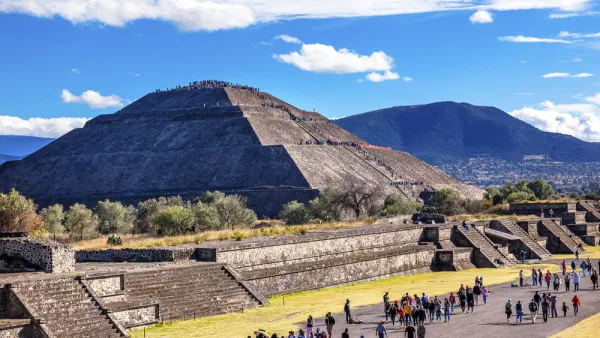On the 90th anniversary of the founding of modern Turkey, officials realized a vision dreamt by an Ottoman sultan by inaugurating a rail tunnel beneath the Bosporus to connect Asia and Europe. Critics have questioned the tunnel's safety.
On Tuesday, "Officials cut the ribbon on a $4 billion, 8.5-mile rail tunnel that runs almost 200 feet below the Bosporus seabed, part of a broader project called the Marmaray meant to bind Europe and Asia closer together, ease congestion in [Istanbul] and, in more grandiose visions, eventually form part of a trade route between Europe and China," report Ceylan Yeginsu and Alan Cowell.
Though the project took nine years to complete thanks, in part, to archaeological discoveries, some are questioning if its opening is being rushed to meet the symbolic opening date. “The part that is in service is very limited,” a city planner, Tayfun Kahraman, told Agence France-Presse. “We are wondering why this inauguration is happening so soon.”
"The biggest issues seem to be that the tunnel still lacks an electronic security system and that it could flood," explain Yeginsu and Cowell. "Suleyman Solmaz, a senior figure at the Chamber of Architects and Engineers, said 'it would be murder to open it under these conditions,' and added that an engineer on the project told him he would not dare ride through the tunnel until those issues were addressed."
FULL STORY: Amid Debate Over Safety, Turkey Unveils Bosporus Tunnel

National Parks Layoffs Will Cause Communities to Lose Billions
Thousands of essential park workers were laid off this week, just before the busy spring break season.

Retro-silient?: America’s First “Eco-burb,” The Woodlands Turns 50
A master-planned community north of Houston offers lessons on green infrastructure and resilient design, but falls short of its founder’s lofty affordability and walkability goals.

Delivering for America Plan Will Downgrade Mail Service in at Least 49.5 Percent of Zip Codes
Republican and Democrat lawmakers criticize the plan for its disproportionate negative impact on rural communities.

Test News Post 1
This is a summary

Test News Headline 46
Test for the image on the front page.

Balancing Bombs and Butterflies: How the National Guard Protects a Rare Species
The National Guard at Fort Indiantown Gap uses GIS technology and land management strategies to balance military training with conservation efforts, ensuring the survival of the rare eastern regal fritillary butterfly.
Urban Design for Planners 1: Software Tools
This six-course series explores essential urban design concepts using open source software and equips planners with the tools they need to participate fully in the urban design process.
Planning for Universal Design
Learn the tools for implementing Universal Design in planning regulations.
EMC Planning Group, Inc.
Planetizen
Planetizen
Mpact (formerly Rail~Volution)
Great Falls Development Authority, Inc.
HUDs Office of Policy Development and Research
NYU Wagner Graduate School of Public Service



























